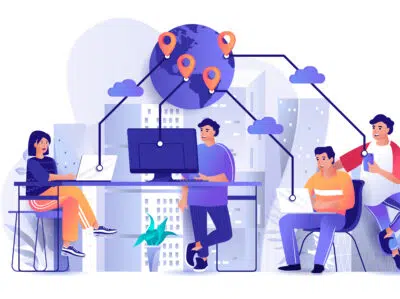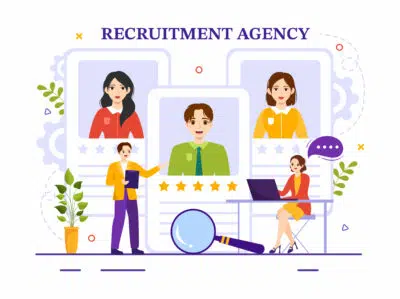Attract diverse talent and watch your organisation grow

The gig economy is thriving. Here’s why.
April 9, 2022
Hire proficiency with social media recruitment
April 9, 2022
People reaching for a job offer
Industries worldwide are now in consensus that diversity and inclusion (D&I) in the workforce is a win-win proposition for both traditionally under-represented social groups and organisations that have successfully integrated D&I into their culture. A Harvard Business School report from 2020 states that “top candidates prefer organisations with diversity because diverse teams have proven to be more successful and innovative.” Besides, it’s well established that employee teams from diverse backgrounds bring fresh ideas, perspectives and skills to the table. In short, for companies everywhere, it’s no longer about whether they should diversify their workforce; rather, the question is how best they can attract diverse talent.
Getting started with D&I
Before you get down to brainstorming with your leaders on D&I strategies, take time to introspect on the existing diversity in your workforce. John M. O’Connor, from Forbes Coaches Council, offers a simple suggestion. Take a photo of your employees and observe it. Show it to your team. What does the image say to you and your team? How would an outsider view it? Think about diversity in multiple ways, in terms of gender, experience, language, ethnicity, the differently-abled, etc. This basic exercise can help you head in the right direction.
Six ways to attract diverse talent
- Structure your interviews
Using your ideal employee profile, create a structured interview process that ensures all candidates are asked identical questions. This helps to eliminate bias; every candidate gets interviewed under the same conditions as you step up efforts to diversify your hiring.
- Use gender-neutral language for more inclusivity.
Did you know that the language used in job descriptions can unintentionally keep away worthy candidates from under-represented categories? This realisation came from a Hewlett-Packard internal report, which revealed that men would apply for a job if they meet 60% of the specified criteria, whereas women would apply for a position only if they meet 100% of the qualifications. Why? Because women candidates, it appears, perceive the hiring process differently from men. Their attitude is, “I don’t meet all the requirements anyway, so why bother to apply.” In other words, the risk of failure keeps them from applying. To get around this concern, your job descriptions should be stripped down to only essential qualifications. Consider adding a statement that will encourage people from varied backgrounds to apply if their skills are a close match to the job qualifications. Then, run your description through a gender decoder website that will show up inadvertently gender-coded terms that may discourage women candidates.
- Find and eliminate unconscious bias
It’s nice to believe that we are reasonably fair-minded folk. Unconscious bias, however, does creep into hiring procedures based on candidates’ names, schools, addresses, language, and physical disabilities. Some suggestions to get past these dark spots:
- Help your recruiting managers to avoid unconscious bias at the first stage of reviewing resumes by deleting all non-essential information about candidates.
- Track candidates’ progress at every stage of the hiring process. If, for instance, there is a sizeable reduction in minority candidates between the first interview and subsequent skill assessment, you probably need to get your hiring team into an unconscious bias training programme. These courses can help them, and all employees for that matter, to recognise and resolve their ingrained prejudices. Such programmes are, in fact, essential to building an overall culture of inclusiveness and will help in retaining candidates from less represented groups through the recruitment process.
- With hiring events increasingly moving online, it’s essential that you keep an eye on your organisation’s marketing methods and the unique nature of online interactions to filter out unconscious bias that can work against candidates from diverse backgrounds.
- Develop proactive partnerships
Don’t wait for diversity to come to you. Take a proactive approach by sourcing talents from under-represented groups. You could, for instance, build partnerships with minority educational institutions. At recruitment events, communicate to potential candidates, in inclusive language, why you think they would fit well into your organisation. State your commitment to diversity hiring in explicit terms. This strategy will enable you to hire fresh candidates who can grow within the organisation to leadership roles.
- Talk to your employees.
Word of mouth is arguably one of the most effective ways to source new candidates. Your current employees are your ambassadors; their perceptions about your organisation get shared across their social circles. Talk to them about the importance of a diverse workplace and how you propose to enhance D&I in the organisation. If you don’t have an employee referral programme in place, now is the time to start one.
- Build your organisation's brand on social media to reflect diversity and inclusion.
Social media sites like LinkedIn and Facebook are effective ways to build your organisation's brand and help your recruiters in targeting diverse candidates. On LinkedIn, for example, hiring teams can join multiple professional groups, communicate with members about your D&I policies and post about new job openings. Use Facebook to design ad campaigns that target specific student groups for entry-level hiring.
A diverse mix of voices leads to better discussions, decisions, and outcomes for everyone.
|
|---|
Measure your progress
Finally, track your organisation’s progress and regularly communicate the results of your D&I strategies with your leaders. This helps to percolate information down the line about the organisation’s commitment to diversity and inclusion.
D&I is not just a cool mantra that bumps up productivity and innovativeness by default. On the contrary, a study on gender diversity in Harvard Business Review (2019) revealed that D&I policy, in certain contexts, actually disrupts social cohesiveness in organisations. The study led to an important finding: diverse workforces yield benefits only in cultures and industries where people believe that D&I is important. Countries where this belief is not culturally ingrained do not gain from diversity and inclusion policies.


